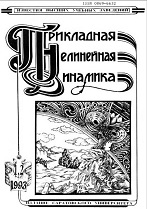|
This article is cited in 2 scientific papers (total in 2 papers)
NONLINEAR DYNAMICS AND NEUROSCIENCE
Revealing the neural network underlying covert picture-naming paradigm using magnetoencephalography
P. Ñhholaka, F. Tabarib, A. N. Pisarchikac
a Universidad Politecnica de Madrid, Spain
b Universidad Autonoma de Madrid, Spain
c Innopolis University, Russia
Abstract:
The ability to name trivial everyday objects is a key cognitive function that is tested after head injuries or brain surgeries. Although quite a lot of long-standing knowledge on this topic has accumulated over the past few decades and many theoretical models have been created, the underlying neural substrate and brain functioning are still not fully aligned. As far as we know, there have been no studies on this topic using magnetoencephalography (MEG), which allows recording electrophysiological activity with a high temporal resolution. Therefore, to study the underlying spatio-temporal brain activations during the sensory and semantic processing of object naming, we conducted MEG experiments with 15 subjects grouped into three equal-sized groups with different types of language training and skills. Using boundary element methods for modelling cortical surfaces and dynamic statistical parametric mapping to solve the inverse problem, we reconstructed the cortical source activity from the recorded MEG data. The reconstructed cortical maps showed a homogeneous brain response in all three groups at the sensory processing stage, while the responses between the three groups at the semantic processing stage were different. In addition, average time courses were constructed for key brain regions such as the lateral occipital cortex (LO), fusiform gyrus (FG), Broca's area (BA), and Wernicke's area (WA). The obtained results assume unimodal forms for LO and WA time series, and bimodal forms for FG and BA. The only LO curve peak and the first FG peak resided in the time interval for the sensory processing stage, whereas, the only WA peak, the second FG peak and the second BA peak resided in the semantic processing stage. The first BA peak was located at the boundary separating the two stages. In addition to segregating regions involved in sensory and semantic processing, this study confirmed the involvement of FG in object naming (for the first time using MEG) that is at risk of resection during mesial temporal lobe epilepsy interventions. However, the results from this work are preliminary due to the limited sample size, and future research with a larger cohort of subjects are needed to verify/strengthen the findings of this study.
Keywords:
magnetoencephalography, picture naming, object recognition, cognitive neuroscience, visual perception.
Received: 10.07.2021
Citation:
P. Ñhholak, F. Tabari, A. N. Pisarchik, “Revealing the neural network underlying covert picture-naming paradigm using magnetoencephalography”, Izvestiya VUZ. Applied Nonlinear Dynamics, 30:1 (2022), 76–95
Linking options:
https://www.mathnet.ru/eng/ivp464 https://www.mathnet.ru/eng/ivp/v30/i1/p76
|

| Statistics & downloads: |
| Abstract page: | 87 | | Full-text PDF : | 53 | | References: | 13 |
|




 Contact us:
Contact us: Terms of Use
Terms of Use
 Registration to the website
Registration to the website Logotypes
Logotypes








 Citation in format
Citation in format 
